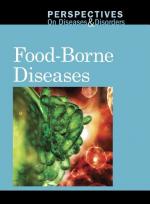|
This section contains 1,280 words (approx. 5 pages at 300 words per page) |

|
Abigail Trafford
About the author: Abigail Trafford is a health columnist for the Washington Post.
The risk of contracting mad cow disease in the United States is minimal. Americans are more likely to contract bacterial types of food-borne illnesses, such as Listeriosis or Salmonella, than they are mad cow disease. Even if a cowthe main transmitter of the disease did become sick, officials would isolate the animal long before it could become part of the food chain and a risk to humans. People need to put the potential risk from mad cow disease in perspective and not allow irrational fear to cloud their judgment about whether or not to continue to eat beef.
The man at a dinner party leans over...
|
This section contains 1,280 words (approx. 5 pages at 300 words per page) |

|




